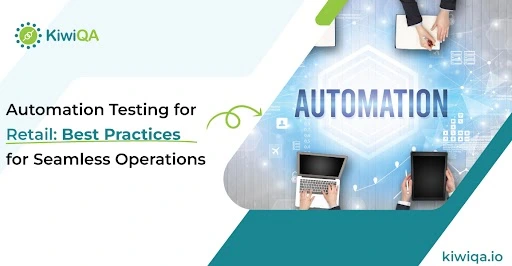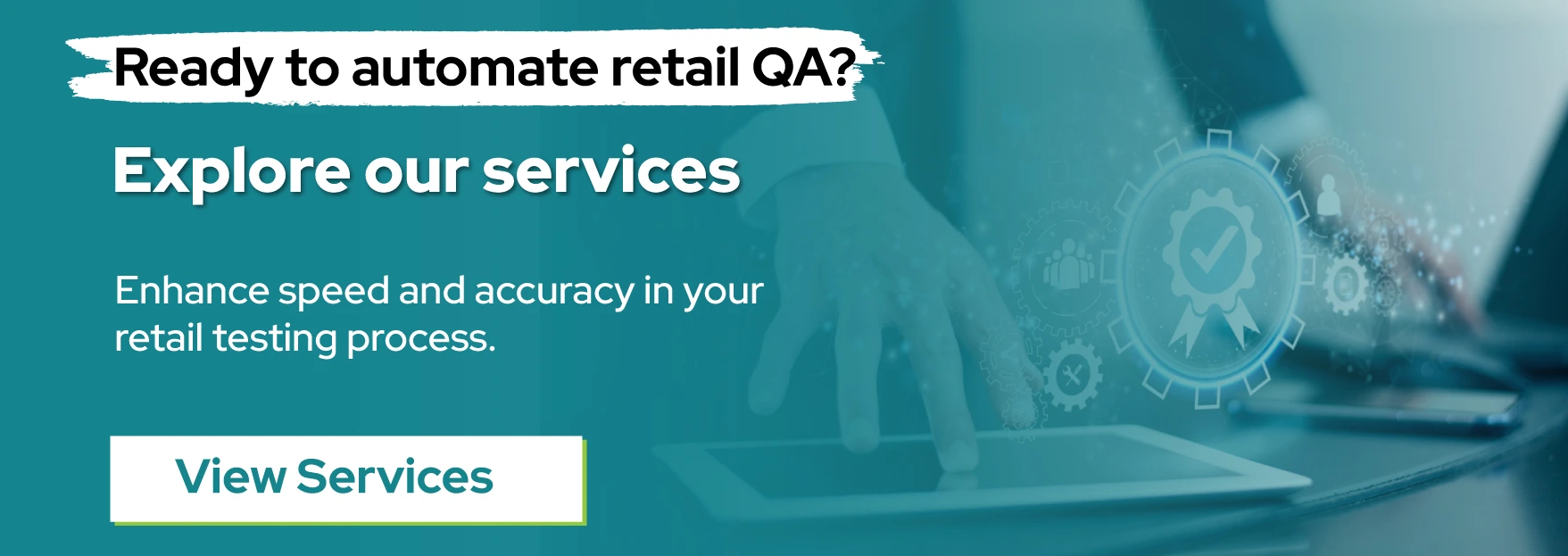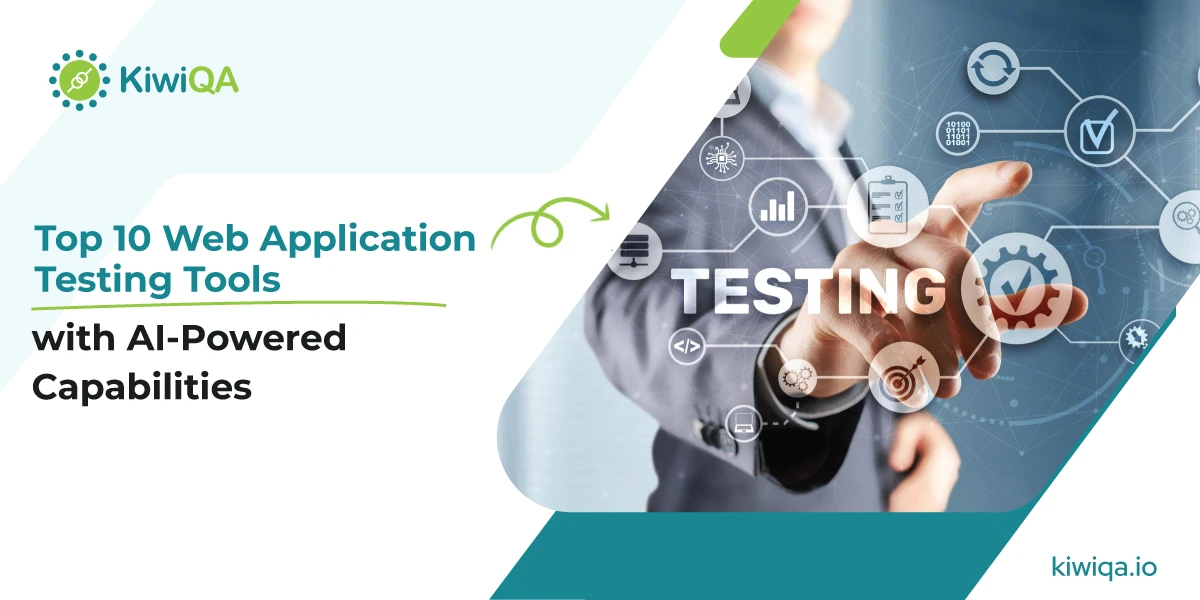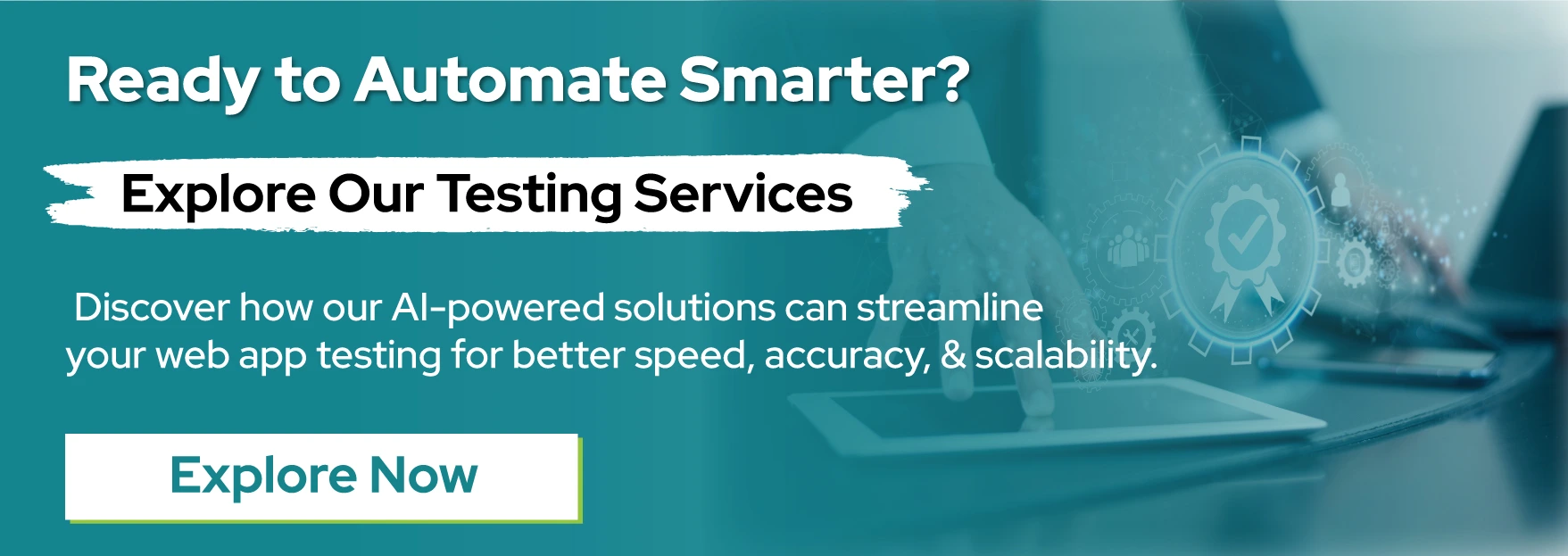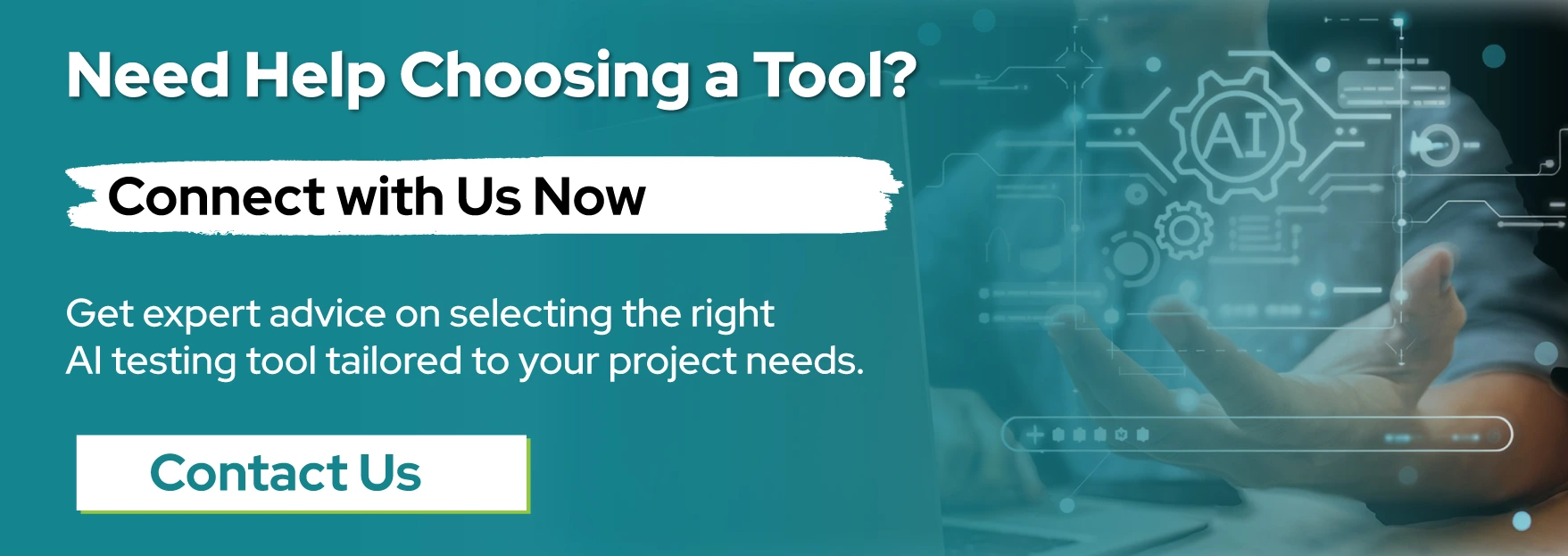Retail is counted as a sector that witnessed unprecedented growth over the passing days. This sector is mostly impacted by digital transformation as compared to others. The continuous changes in customer behaviors toward online shopping built pressure on businesses to match user demands.
When a customer faces any disruptions, the reputation of the retailer is at risk. After online transformation, the retail industry aims to give a seamless customer journey. The revolution has transformed how the application has been identified, developed & deployed in the retail sector. The worldwide retail industry is aiming to witness a surge of $39,933 billion in 2030.
Retail companies frequently implement features to match changing needs. A small glitch in the app can affect the business & customers. This is when automation testing comes in. The streamlined automation testing approaches avoid data risks & security standards. With this, businesses can leverage the benefits of the digital revolution while managing the risks. Read the blog to know how test automation consulting services ensure effective, seamless & scalable operations.
Why Retail Businesses Need Automation Testing?
Digital transformation has put retail companies under peer pressure to deliver expected outcomes. To deliver a flawless customer experience, stringent testing of the components involved in the digital systems is required. Using test automation consulting for a retail business to enhance user experience & limit the security threat.
The retail application has multiple components, from warehouse to payment options & shipping options to inventory. Retail app testing validates component synchronization. Retail designing applications is complex due to evolving customer necessity. It’s tough to have an app that resonates with increasing customer needs while maintaining quality. It’s necessary to keep your retail application secure from threats. Applications must be tested under various loads to meet end-user expectations.
In the retail industry, the customer experience can either make or break your business. The glitches in the checkout process and slow-loading page can drive your customers away. In a modern retail environment, multiple systems interact to verify that the components are performing well. To verify the product selections are consistent across devices & ensure the promotion & discounts are applied seamlessly, retail test automation consulting services are a must. Overall, to deliver an uninterrupted shopping experience & safeguard your reputation, automation testing is a must.
Also Read :- https://www.kiwiqa.io/top-10-web-application-testing-tools/
Key Challenges in the Retail Industry
-
Omnichannel user experience demands
It’s not easy for retail owners to keep up with frequent changes in existing resources. The surge of omnichannel is high, and the retail industry faces challenges. The industry is experiencing inconvenience and high costs. The omnichannel setting describes a scenario where various sales channels connect for a consistent experience.
However, the idea of reaching various customers through various mediums is tough. Before the evolution of the Internet, retailers used catalogs to sell their products. Later, they shift to billboards & display ads to reach customers. However, in omnichannel, customers are the center of business. To bridge the gap, the retail industry requires advanced technology to balance between warehousing & sales.
-
Frequent updates across platforms
Frequent updates in retail platforms bring a significant challenge to maintaining a consistent customer experience. The challenge causes complex integration management & ensures data synchronization. It includes adapting to changes in customer preference, management of supply chain & inventory management & ensuring data security & privacy. To get rid of the challenge, invest in unified technology, streaming supply chain, manage inventory, & focus on data integration. Additionally, give priority to cyber security & data privacy along with continuous upskilling.
-
Seasonal spikes and high transaction volumes
Demand forecasting is the biggest challenge for the retail industry, with rising costs, negative customer feedback, and missed sales opportunities in peak season. Retailers should be skilled in the art of managing increasing demand by verifying enough inventory & handling surges in transactions without compromising customer experience. Retailers must seek providers to handle order surges and offer fast & seamless onboarding to limit disruption.
-
Integration with third-party systems (payment, CRM, logistics)
Integration with a 3rd party system brings several key challenges for retail business. It includes ensuring compatibility between the various systems, managing data synchronization, balancing security & addressing potential errors during implementation. Retailers must also consider the integration cost, user training & long-term impact on customer experience. By carefully addressing the challenges, retailers can integrate 3rd party systems to enhance operations and boost customer experience to gain a competitive edge in the market.
How Automation Solves These Issues?
In recent years, there has been a dramatic shift in the retail sector as a result of shifting consumer behavior. Therefore, it’s critical for retail businesses to use cutting-edge software testing automation consulting solutions. Automation testing is becoming a crucial component of a retailer’s success as a result of this shift. Here, check how automation brings positive changes-
-
Faster release cycles with fewer defects
Software products may face significant challenges during the many stages of a test cycle, including requirements evaluation, test preparation, test creation, testing environment setup, test execution, and test closure. In the retail application testing cycle, stakeholders often provide an approximate date of publication. Thus, timely completion of each test cycle step is crucial.
With the introduction of automation, testing allows comprehensive test coverage to various channels. It limits the risk of undetected issues & improves the software quality, leading to faster release cycles.
-
Consistent performance across devices and platforms
Automation addresses the challenge of consistent performance through devices & platforms by ensuring the tasks are executed in a similar way. It can be achieved through a standardized process & defined in an automated system that minimizes variability & human errors.
Automation reduces human errors, enhances standardized processes, enhances speed & effectiveness, and allows continuous integration & deployment. Through test automation in retail, businesses can validate that the app has the potential to run on multiple OS, browsers, and devices.
-
Reduced testing time and manual effort
Automation addresses limiting testing time & manual effort by limiting the resources & time required for repetitive tasks. Automation testing takes less time for execution as compared to manual testing & can be performed at minimal additional cost. Test automation consultancy in retail apps eliminates the necessity for manual execution and repetitive tests, freeing up human testers for strategic & complex tasks.
-
Early bug detection and improved customer satisfaction
Automation can enhance early bug detection & customer satisfaction in SDLC. Software development allows faster, comprehensive testing & smart issue resolution. Automated testing enables continuous & brief checks throughout the development lifecycle. It catches bugs & prevents them from crashing. Automation allows for achieving high-quality software & enhanced customer experience.
To provide a seamless shopping experience, automation testing in the retail industry is crucial for identifying defects before they impact customers. For instance, testing guarantees that the checkout process functions flawlessly during a seasonal promotion, eliminating cart abandonment and leaving consumers happy and more inclined to return.
➜ Types of Tests Crucial for Retail Automation
❑ Functional Testing
Functional Automation testing in the retail industry is a type of software testing where an application’s functionality is assessed by comparing it to the requirements and determining if the results match the intended or anticipated results. The goal of functional testing tools is to make sure software operates as intended and fulfills its intended tasks effectively. In order to guarantee software quality and provide end customers with a faultless product, different functional testing techniques are required. Here, we have classified the functional testing types with a short brief-
- Unit testing– This software testing type aims to validate the functionality of various application units. Unit testing aims to test every section of code separately to verify performance. Developers can address bugs in SDLC prior to building a larger system.
- Integration testing– This software testing techniques aim to test integration & interaction between various modules and components. The testing verifies that every element is working together to function properly. The testing aims that various parts of a system are seamless to produce expected outcomes.
- Smoke testing- Smoke software testing is quickly performed to measure the stability & functionality of the app. The aim is to identify & major issues that might indicate critical errors that could damage testing & deployment. Smoke testing is performed to verify the functionality. Selenium, Cypress & Postman are some common examples.
- Acceptance testing- This functional testing focuses on evaluating software development & alignment with user’s expectations. The purpose is to verify the software satisfies the expected functionality, quality & usability standards. It verifies that the software is fulfilling the business objectives & user needs.
❑ Regression Testing
Regression testing is the common software testing practice that aims to verify the customization made on the app hasn’t introduced new bugs & caused unintended side effects. It includes retesting earlier verified functionality to make sure that, following changes, it functions as intended. The main goal of regression testing is to find any flaws or problems that could have arisen as a result of software modifications. It guarantees that any changes or additions made throughout the development process won’t impact the functionality that already exists.
By automating the execution of previously executed test cases, regression testing tools make sure that, even after changes, the application continues to behave as intended. These tools include, for example, Watir, TestGrid, Appium, and Selenium. By identifying unexpected effects of changes, regression testing helps save important business processes from being disrupted. Retail companies may guarantee the performance, stability, and dependability of their automated systems by putting in place a strong regression testing plan that incorporates automation. This will eventually increase consumer happiness and commercial success.
❑ Performance Testing
This non-functional testing is used to measure the response time, speed & behavior of the application. It detects the stability of the app under a specific workload. Finding & fixing performance errors in software is the goal of performance testing. Several software system quality components involve app output, network bandwidth, processing speed & data transfer speed, memory consumption, workload efficiency, and response time.
Performance testing is classified into multiple testing types, such as volume, scalability, stress, scalability & load testing. Performance testing assesses how the program operates in various landscapes, especially when traffic is at its peak. For example, a retail website may see a spike in traffic on Black Friday or Cyber Monday. To make sure the system can manage the extra traffic without stuttering or crashing, performance testing would mimic these peak loads. Several performance testing tool examples are LoadRunner, LoadNinja, and K6.
❑ Integration & API Testing
Integration & API testing aims to verify that the integration with a 3rd party system is working seamlessly on the app. The 3rd party systems mostly integrate payment gateways, inventory management, shipping providers, etc. The testing strategy aims to test the performance, functionality, and security of API. Since e-commerce or retail applications are heavily equipped with external services, it’s a necessity to verify that the API is responding reliably under various conditions. It ensures that the user experiences uninterrupted services every time they open the app.
❑ Cross-Browser and Cross-Device Testing
To make sure a website or application works properly across various browsers, operating systems, and devices, cross-browser and cross-device testing are crucial quality assurance procedures. In addition to preventing any problems that users may run across because of browser or device-specific incompatibilities, this testing helps maintain a uniform user experience.
❑ Best Practices for Automation Testing in Retail
You may create a test automation plan that supports your present development requirements and can be adjusted to meet future problems by adhering to these best practices, which will guarantee long-term success. There is no one-size-fits-all method for automated testing; instead, a strategy should be customized to the project’s requirements. Nonetheless, you may create an automated retail domain automation testing checklist using certain procedures and advice.
❑ Define Clear Automation Objectives
For automation testing in retail, first define the automation objectives before anything. Start understanding the business goal of a retail firm. For example, whether they want to increase their personalization, enhance cart value, or reduce abandonment. Identify the key functionalities & then set key metrics.
Always focus on ROI-driven automation to align the business with expected goals. It involves identifying measurable, specific, achievable & time-bound goals. The objectives you decide on must align with the business goal of the retail organization. Test automation in retail will enhance customer experience, improve sales & limit operational costs.
❑ Use a Modular & Scalable Test Architecture
For effective automation testing in the retail landscape with modular & scalable architecture, give priority to structured approaches. Design reusable test components, test scripts, and integration with CI/CD pipeline. Focus on robust test data management, error handling, and regular test script maintenance.
First, break down the test into small & reusable elements to enhance maintainability & limit redundancy. Integrate data-driven testing & use them for parameterized test data to multiple scenarios & edge cases. Encapsulation of basic functionalities into reusable libraries for multiple scenarios is also necessary.
❑ Leverage the Right Tools and Frameworks
The retail industry includes multiple types of applications, like web, mobile, desktop & cloud-based systems. You must choose test automation tools & frameworks that support multiple platforms, environments & landscapes. Additionally, you are required to consider the ease of use, integration, performance & scalability of tools/frameworks.
Some popular tools the testing team used are Selenium, Cypress, TestComplete, and Appium for mobile. Choose equipment that fits your financial resources and be truthful about your budgetary constraints. Choose the best automation testing platform for your project by taking into account aspects like future scalability, maintenance, integration capabilities, and simplicity of use.
❑ Maintain Realistic and Stable Test Data
Give automated unit tests top priority since they are quick and offer early feedback on the quality of the code. To provide a balanced approach to test automation, use integration tests and less end-to-end tests to cover more complicated situations. Maintaining stable & realistic test data is necessary for effective automation testing.
The following factor includes crafting test data that mimics the real-world scenario & ensures it remains consistent across test runs to avoid false positives. The well-defined data strategy utilizes techniques like data-driven testing & test data management to achieve this.
❑ Integrate Automation into DevOps Workflow
Starting with a clear automation plan, prioritizing tests for the greatest return on investment, selecting the appropriate tools, and making sure tests are modular and maintainable are all best practices for integrating automation testing into a DevOps workflow in retail. Prioritise pipelines for continuous integration and delivery (CI/CD), pay attention to parallel execution and test maintenance, and more. Additionally crucial are a shift-left strategy, AI/ML integration, and thorough reporting.
To achieve DevOps, a culture of cooperation and automation between teams of developers and operations, continuous testing and integration are crucial procedures. Automation assessment at every stage of SDLC, from planning to deployment, is referred to as continuous testing. Code updates from several sources are regularly merged into a common repository using continuous integration, which also involves automated testing to guarantee quality and compatibility. In the retail sector, you may attain quicker feedback, shorter delivery cycles, and more consumer happiness by putting continuous testing and integration into practice.
❑ Continuously Monitor and Optimize Tests
To stay current in the retail sector, test automation is a continuous process that needs regular upgrades and upkeep. This is a result of the industry’s dynamic and competitive nature, which frequently leads to modifications in the needs, features, standards, and functions of the system. Continuous test optimization and monitoring are essential for successful and effective automation testing in retail. To keep tests successful, this entails continuously monitoring test performance, pinpointing areas for development, and upgrading tests on a regular basis.
You should examine and restructure test scripts for better readability and efficiency to make sure they are current and devoid of mistakes, flaws, and redundancies. Additionally, add or edit any missing or insufficient test scripts and remove or alter any that are out-of-date or unnecessary. Additionally, employ code analysis and quality tools to find and address any problems and version control and configuration management systems to monitor changes in the test scripts.
Also Read :- https://www.kiwiqa.io/how-a-well-planned-test-automation-strategy-saves-time-and-costs/
Benefits of Automation Testing for Retail Operations
➜ Faster time-to-market with fewer errors
Comprehensive tests take a lot less time to do thanks to automation, which speeds up time-to-market and streamlines your development process. It delivers goods to users quickly & effectively. Additionally, you may lessen the need for expensive rework and changes later in the development cycle by identifying flaws early.
➜ Higher customer satisfaction with consistent UX
To provide a seamless shopping experience, retail software testing is crucial for identifying defects before they impact customers. For instance, testing guarantees that the checkout process functions flawlessly during a seasonal promotion, eliminating cart abandonment and leaving consumers happy and more inclined to return.
➜ Reduced manual QA effort and costs
By automating repetitive processes & QA automation consulting services, teams may concentrate on more sophisticated testing and strategic objectives, reducing the demand for manual testing, which can be costly and time-consuming.
➜ Increased scalability and agility for new rollouts
For retail companies trying to become more agile and scalable, especially when launching new products, automated testing is an essential tool. Automation helps companies adjust to shifting market conditions, enhance customer experience, and lower the risk of expensive mistakes by speeding up testing, increasing test coverage, and facilitating quicker release cycles.
➜ Real-time insights into application performance
Businesses may swiftly locate and fix performance bottlenecks by automating testing procedures, which guarantees a more seamless user experience and averts any problems during periods of high sales. By keeping the system responsive and stable, this proactive strategy for performance monitoring eventually improves client loyalty and business results.
Ready to Streamline Retail with Automation Testing? Let’s Get Started
The benefits of test automation in the retail sector have strong significance. Businesses must take necessary approaches to win customer’s hearts & surpass the industry competition. E-commerce/retail app testing ensures the scalability, usability, and security of the system and assists in growing the business sooner. For tailored automation solutions, talk with the test automation consulting services.
